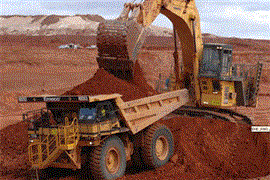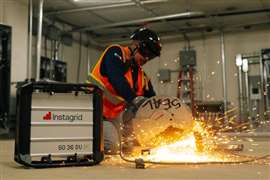How the hierarchy of the top 10 construction OEMs in Asia has changed in the past decade
19 July 2023
A new animated chart shows the way in which the hierarchy of the biggest construction equipment manufacturers in the Asia-Pacific region have traded positions over the past decade.
The chart draws on data from International Construction’s newly updated Yellow Table, which tracks the top 50 construction OEMs across the world.
Japanese OEM Komatsu has dominated the list throughout that time, growing its revenue from US$17.6 billion in 2013 to $24.6 billion last year.
But other companies have either moved further up the list or seen their sales swell significantly over that time.
Sales among the top 10 OEMs in the region in 2013 totalled $58.1 bllion. By 2022, that figure had climbed to $86.5 billion.
Steady growth for Chinese OEMs
Sany saw its revenue almost double over the decade, rising from just over $6 billion in 2013 to £11.9 billion in 2022, having peaked at just over $16 billion in 2021.
Meanwhile, it has climbed one place during the decade to move from being the fourth largest OEM in the Asia-Pacific region to the third.
One company to see a slightly more substantial rise in position is XCMG, which has gone from sixth in the Asia-Pacific region in 2013 to second in 2022.
Its sales rose from $4.6 billion to $13.4 billion over that period.
Hitachi Construction Machinery dropped from second place in 2013 to fourth in 2022, despite having seen its revenue increase from $7.9 billion in 2013 to $9.2 billion over the same period.
The Yellow Table
To view the 2023 version of the Yellow Table in full, click here. You can also find an archive of the Yellow Table stretching back to 2006 online in International Construction’s digital editions.
Positions in the Yellow Table for each year are construction equipment sales based on sales in the previous calendar year in US dollars. Currencies have been converted to dollars based on the average exchange rate over the course of each year to try and ensure fairness.
Each year, International Construction gathers data from a variety of sources, including audited accounts, company statements and reputable third party sources. In Japan, India and certain other countries, the use of the fiscal year (end of 31 March) makes it impossible to establish calendar year information. In these cases, fiscal year results were used.
In some cases, International Construction made an estimate of revenues based on historical data and industry trends. While every effort has been made to ensure information in this chart is accurate, International Construction does not accept any liability for errors or omissions.
If you would like to comment on the Yellow Table or feel your company should be included, please email International Construction editor Andy Brown at: [email protected]
STAY CONNECTED



Receive the information you need when you need it through our world-leading magazines, newsletters and daily briefings.
CONNECT WITH THE TEAM












